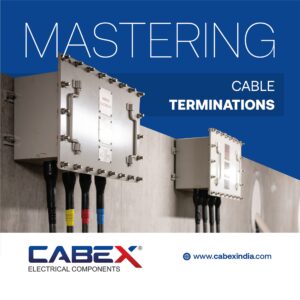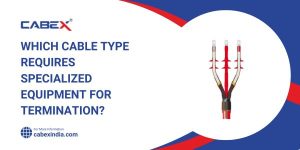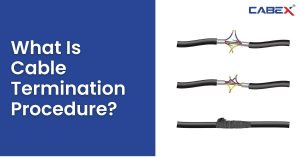Introduction Terminating Cables
In Terminating Cables, Precision and Experience Matter. A perfect termination will improve performance and can also increase the life expectancy of a cable infrastructure. Still, many critical details are overlooked or sometimes ignored that may result in inefficiency, hazards, and costly rework. Herein, the top 10 mistakes to avoid when terminating cables with detailed, insightful ways of achieving optimal results are given.
Within electrical and networking installations, cable termination is relevant to both performance and safety. Proper termination will assure a quality and reliable connection and help to minimize the risk of signal loss or electrical shock from the system. Here are the top 10 mistakes to avoid when terminating cables, with insights and best practices on how to optimize your installations:
Define Cable Termination
Before going into the mistakes, it’s essential to explain cable termination. It is a process of connecting cables to devices or connectors so that there is a secure electrical or data transmission.
Proper Termination–Its Importance
The proper termination of signal wires and electrical conductors will avoid the loss of signal integrity and critical data, ensuring safety in electrical systems. Improper termination may bring about connectivity issues, signal degradation, and can sometimes even also result in equipment damage due to such signal reduction.
Types and Categories of Cables
Termination is basically done differently for different types of the cables, which is necessary to achieve best results. Therefore, knowing types and categories are the most essential part of not making common mistakes.
Coaxial Cables
For telecommunications and audio-visual operations, coaxial cables need accurate termination to not to lose the quality of the signal.
Ethernet Cables (Twisted Pair)
For networking, Ethernet cables are generally in different types and categories (such as Cat5e, Cat6) that need accurate termination to optimize its functioning in the transmitting speed of data.
Fiber Optical Cables
Critical for high-speed data transmission over long distances, fiber optic cables must be carefully handled during termination to prevent signal loss.
Common Mistakes in Cable Termination
Mistake 1: Wrong Cable Stripping
When a cable is stripped in an inappropriate manner, conductor damage, contact area reduction, and hence signal integrity reduction will result.
Mistake 2: Not Testing Cables
If cables have not been tested upon termination, faults or performance issues at the point of installation could go unnoticed.
Mistake 3: Incorrect Tools
Poor tool selection could result in damage to either the cables or the connectors, affecting performance and reliability.
Mistake 4: Wrong Connector Choice
Either mismatched or low-quality connectors will yield unreliable connections and hence cause a loss of some kind in that signal.
Mistake 5: Poor Crimping Techniques
Improper crimping of connectors can cause weak connections or even damage in the shielding of the cables.
Mistake 6: Ignoring Environmental Factors
Not taking care of environmental conditions at the time of termination, such as temperature or moisture, will cause the cable to deteriorate hastily.
Mistake 7: Overlooking Cable Management
Bad cable management is also going to cause tangled cables, increased signal interference, and difficulty in maintenance that may be required in the future.
Mistake 8: Lack of Documentation
Not documenting cable terminations is a problem when troubleshooting or trying to upgrade in the future.
Mistake 9: Not Following Manufacturer Recommendations
Failing to follow manufacturer recommendations on cable termination, at best will void warranties and at worst will yield suboptical performances.
Mistake 10: Rushing the Job
Rushing to terminate cables increases the potential for errors and decreases the quality of the installation.
GENERAL Mistakes in Cable Termination
In cable termination, precision and knowledge are key criteria. Proper termination not only raises performance but also helps to elongate the life of the Cable infrastructure. However, very often, people miss minute details and end up with inefficient designs that are hazardous, due to which they may turn out to be expensive and require redesign. The paper presents the top 10 mistakes to avoid when terminating cables. Detailed insights are presented herein to help achieve optimal results.
1. Failure to use Proper Tools and Equipment
Effective cable termination requires proper specialized tools made for the same purpose—cable cutters, strippers, crimpers, and continuity testers, among others. Improper tools may give incomplete cuts, conductor damage, or just hold an unreliable termination together—all these can jeopardize the integrity of the whole network.
2. Entailing Wrong Cable Preparation
Secondly, proper preparation of the cables should be done prior to termination. Among these are stripping the cable of its correct length and being careful in taking out the outer jacket to avoid nicking the insulation of the conductors, since improper preparation will result in poor connections, loss of signals, or even electrical shorts.
3. Forgetting Cable Compatibility
The different cable types have different termination requirements. Not considering cable incompatibility can result in a mismatched set of connectors and the wrong termination techniques, which will reduce the bandwidth or even bring down the network. Always check for proper connectors and terminations on the cable type or category.
4. Insufficient Training and Experience
This should be done by a sophisticated technician who has undergone necessary training and has experience in the same field. Otherwise, unskilled people will be wiring the sequences incorrectly or may crimp them using improper techniques or fail to provide adequate strain relief, hence reducing the reliability and safety of the network.
5. Lack of Attention to Industry Standards and Regulations
Industry standards and regulations on cable termination are not something to be taken lightly either. Standards such as TIA/EIA or ISO define the correct termination techniques, proper ways to handle cable, and safety guidelines. Not adhering to these standards can result in non-compliance problems and eventual legal liabilities.
6. Bad Cable Management Practices
Effective cable management does not end at termination points. Proper cable management can ensure that cables are not lying together, unnecessary bends, or even poorly labeled so maintenance and troubleshooting would be facilitated later. Proper cable management practices guarantee neatness, accessibility, and long-term reliability.
7. Overlooking Environmental Factors
Thus, after all, environmental conditions do affect the performance of the cables. Temperature infield swings and moisture/chemical exposure will degrade the materials or cause corrosion. Consider environmental factors in cable termination to choose appropriate materials and techniques that ensure durability.
8. Skipping Cable Testing and Verification
Testing and verification upon the termination conclusion are also very essential and involve continuity testing, signal testing, and checking for data transmission, where applicable. Omission of these steps means that faults or performance deficiencies may not be established, hence not corrected, which could lead to expensive rework or loss of network time.
9. Use of low-quality materials
Material quality naturally affects termination quality. Insufficient and low-quality materials, such as using low-grade connectors or cheap insulation—indeed, even the use of counterfeit components—will not assure reliability or performance. Always use reputable suppliers and certified materials to ensure long-term integrity.
10. Rushing the termination process:
Lastly, patience and attention to detail are important at cable termination. Any rush in conducting the activity could mean improper crimping, incomplete insulation, or connectors out of place. Take time to do every step that is required to execute flawless termination.
Best Practices for Cable Termination
Practice 1: Proper Cable Preparation
This involves proper stripping, trimming, or preparing the cables according to the manufacturer’s specifications.
Practice 2: Good Quality Tool and Connectors Purchased
Specific cable types require appropriate tools and connectors for a reliable termination.
Practice 3: Cable Testing
Appropriate equipment will be required to test cables extensively for continuity and performance upon termination.
Practice 4: Impact Connectivity and Its Effective Cable Management
Cables should be nicely laid out and tied or put in trays to minimize stress or interference with the cables.
Practice 5: Document Every Termination
Keep records of the cable terminations with diagrams and test results; these might be helpful in future reference.
Conclusion
A good cable termination is significant for guaranteeing performance, reliability, and safety within electrical and networking systems. With a view to avoiding common mistakes and following best practices, installers can make sure of faultless connectivity and longevity of systems.
You May Also Like: 5 Types of Electrical Terminations , Difference Between Cable Gland and Cable Termination






